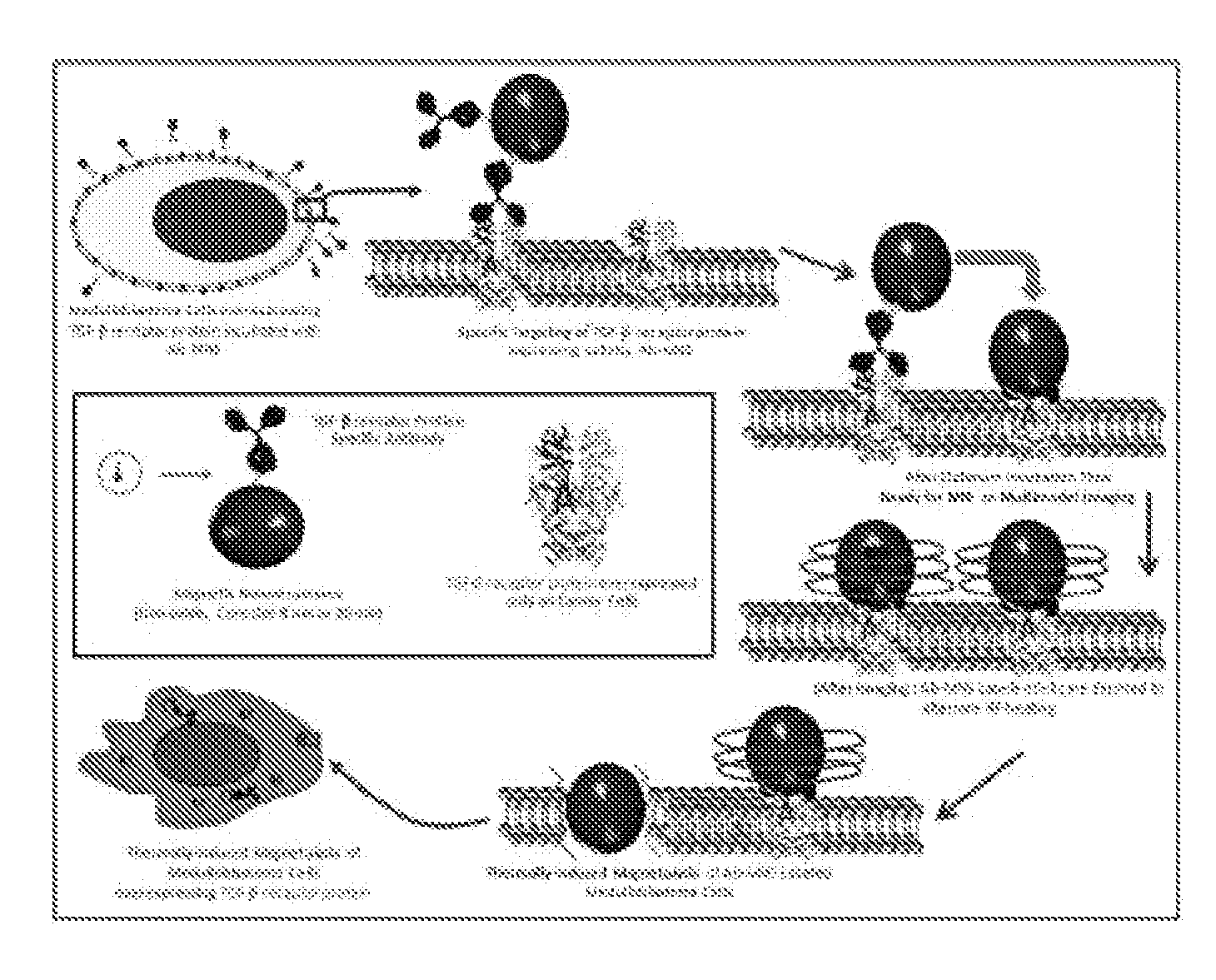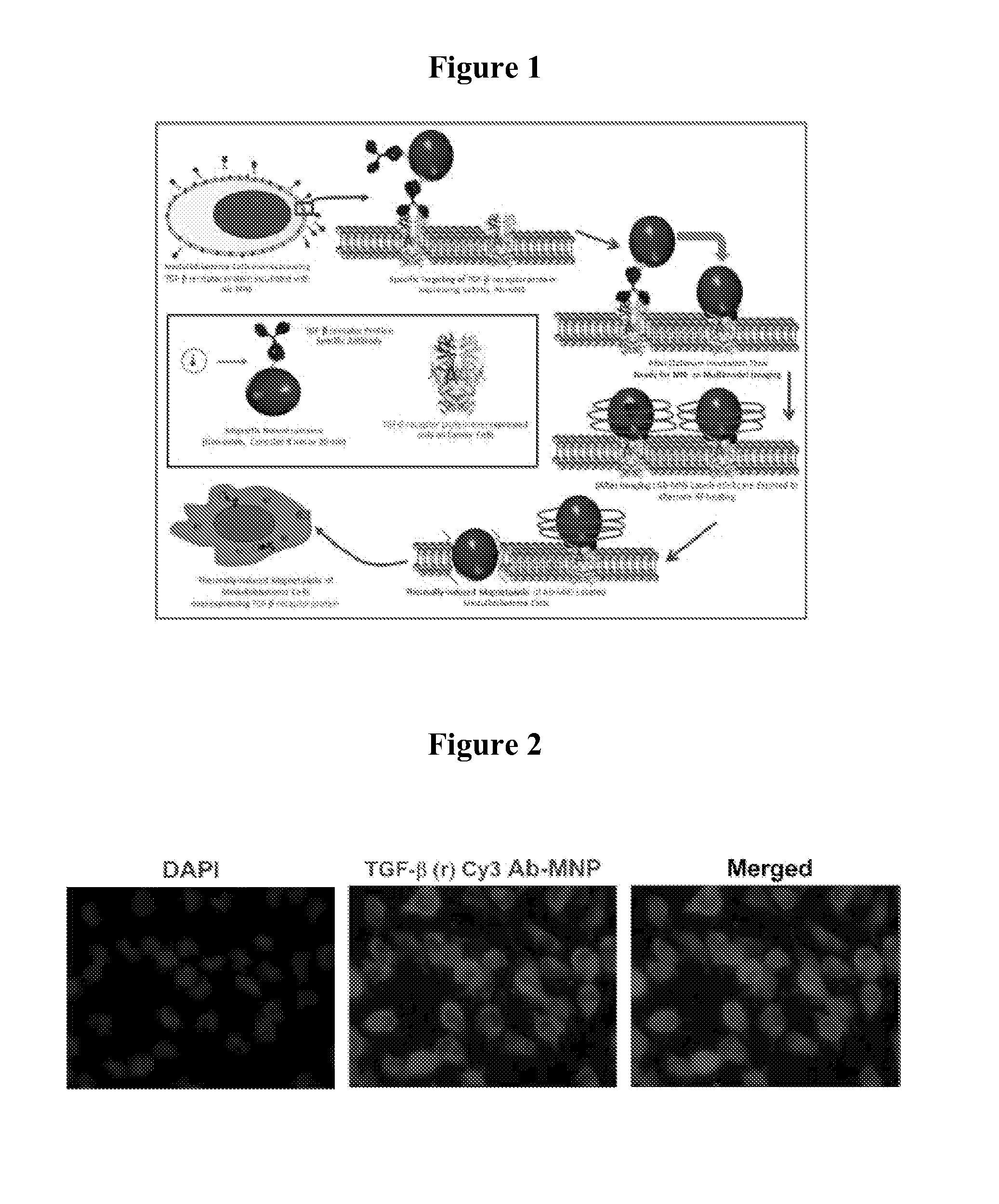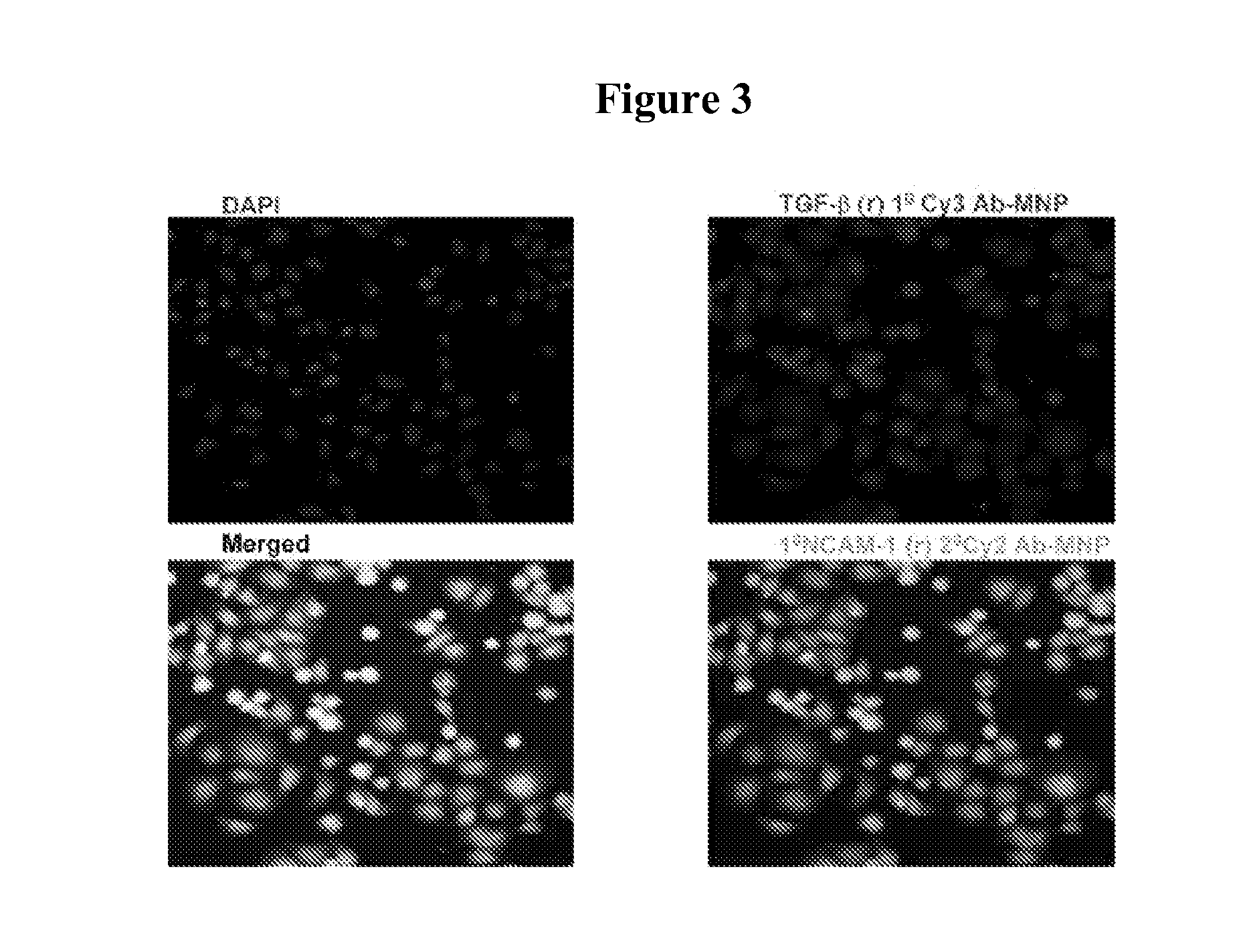Magnetic nanostructures as theranostic agents
a technology of magnetic nanostructures and theranostic agents, which is applied in the field of magnetic nanostructures as theranostic agents, can solve the problems of affecting the normal tissues that are near or along the treatment route, affecting the survival of benign tumors, and affecting the safety of surgery
- Summary
- Abstract
- Description
- Claims
- Application Information
AI Technical Summary
Benefits of technology
Problems solved by technology
Method used
Image
Examples
example 1
1. Conjugation Protocol for Antibody with MNS
[0143]Amino-functionalized magnetic nanostructures were synthesized following a three step protocol:
[0144]A) Sulfhydryl Modification of Amine-Functionalized MNS
Reagents and Materials:
[0145]N-succinimidyl-S-Acetyl-Thioacetate (SATA—Pierce biotechnology, Product number 26102)
Hydroxylamine.HCl (Product No. 26103)
Phosphate Buffered Saline (PBS, Product No. 28372)
[0146]EDTA and 1 N NaOH for modifying PBS buffer
DMSO (Dimethylsulfoxide, Product No. 20688)
Buffer Preparation:
Reaction Buffer
[0147]Prepare 200-500 ml of PBS: 0.1 M phosphate, 0.15 M NaCl, pH 7.2-7.5
Deacetylation Solution
[0148]0.5 M Hydroxylamine, 25 mM EDTA in PBS, pH 7.2-7.5. Dissolve 1.74 g hydroxylamine.HCl and EDTA (0.475 g of tetrasodium salt or 0.365 g of disodium salt) in 40 ml of Reaction Buffer. Add ultrapure water to a final volume of 50 ml and adjust pH to 7.2-7.5 with NaOH.
After 2h Deacetylation Solution
[0149]10 ml reaction buffer containing 10 mM EDTA and adjust pH to 7.2...
example 2
Synthesis of Spherical Magnetic Metal Oxide Nanostructures
[0184]Nanostructures of different sizes were synthesized by seeded-growth thermal decomposition. Iron acetylacetonate (4 mmol) and metal acetylacetonate (2 mmol) (for binary oxides while for ternary and higher compositions depending on the ratio of metal ion precursor) were used as a precursor to make MFe2O4 nanostructures. Three surfactants, dodecylamine (12 mmol), lauric acid (12 mmol), and 1,2-hexadecanediol (20 mmol) were added to stabilize nucleation and growth. Benzyl ether (40 ml) was used as the solvent. The solution was heated to 230° C. for 2 hours with a flow of nitrogen gas to prevent oxidation, and then raised to 280° C. for 1 hour. The resulting nanostructure diameters were 5 to 7 nm (FIG. 32). The magnetic nanostructures were precipitated out from the solvent through external magnetic field as well as with addition of alcohol.
[0185]To grow larger particles, 60 mg of the nanostructure seed was mixed with iron ac...
example 3
Magnetic Nanostructure Immunoprecipitation Protocol
[0186]MNS are prepared for use in immunoprecipitating out ADDLs from solution by washing a desired volume of the Ab-MNS in PBS twice, sonicating and pelleting between washes. The resuspended Ab-MNS are then either treated with 5M NaOH for 1 minute followed by 3 washes with PBS as above or not and then blocked with 0.1% bovine serum albumin (BSA) for 45 minutes to 4 hours at 37° C. with rotation. After blocking, the Ab-MNS are washed with either PBS-0.1% BSA or F12-0.1% BSA and resuspended in this solution prior to adding ADDLs or control. The Ab-MNS are incubated overnight at 4° C. with rotation to allow maximum binding of ADDLs. The Ab-MNS are washed three times with PBS or F12 and then the suspension is transferred to a new tube for the next steps.
Thermal Activation Treatment (RF)
[0187]An alternating magnetic field (AMF) heating system was purchased from MSI Automation, Inc. (Wichita, Kans., USA). The experiment was performed insi...
PUM
| Property | Measurement | Unit |
|---|---|---|
| Mass | aaaaa | aaaaa |
| Dynamic viscosity | aaaaa | aaaaa |
| Frequency | aaaaa | aaaaa |
Abstract
Description
Claims
Application Information
 Login to View More
Login to View More - R&D
- Intellectual Property
- Life Sciences
- Materials
- Tech Scout
- Unparalleled Data Quality
- Higher Quality Content
- 60% Fewer Hallucinations
Browse by: Latest US Patents, China's latest patents, Technical Efficacy Thesaurus, Application Domain, Technology Topic, Popular Technical Reports.
© 2025 PatSnap. All rights reserved.Legal|Privacy policy|Modern Slavery Act Transparency Statement|Sitemap|About US| Contact US: help@patsnap.com



